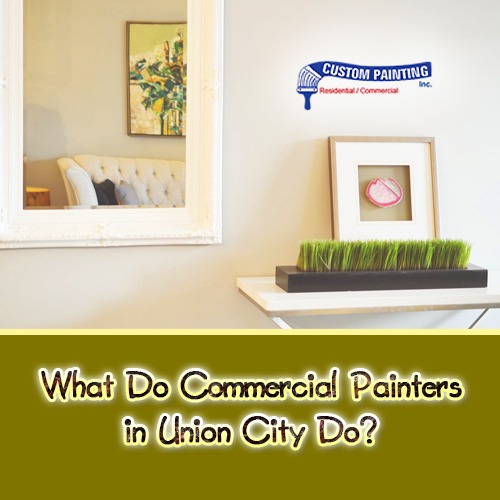Most commercial and residential painters follow the basic order of a painting job — cleaning and de-cluttering, prepping and repairing the surface, painting and cleaning up. However, commercial painters in Union City usually tackle areas that come in a variety of sizes: smaller cafes, spacious commercial complexes, high-rise hotels and condominiums, public buildings like schools and capitols, hospitals and medical facilities, and others.
For taller buildings, they need to step on a crane or scaffolding to reach the higher areas. They may even paint structures with unusual architectural features, which adds to the challenge. That’s why some companies require workers to have additional architectural knowledge.
Aside from the larger and more varied scope of work, what else do commercial painters do that make them distinct from their residential counterparts?
Both residential and commercial painters require careful planning in order to execute their job well. But commercial painters need more calculated planning especially when painting commercial establishments that are still operating, as to not disrupt the business. They would usually put sign up that will caution the tenants or clients not to step on wet paint. Some companies may move to a temporary room while their actual office space is being renovated by commercial painters.
Painting the exteriors are even more challenging. Aside from stepping on cranes, workers should also be fitted with harnesses to prevent them from accidental falling. Sometimes, there are safety nets down below to protect the crew from falling and the passers-by from getting hit by possible debris.
Unlike residential painters, commercial (and industrial) painters are often required to come to work on tight schedules. Depending on how large or high the space is they’re painting or the number of workers, the project may take days or weeks. The job can even be 24/7 non-stop, especially when they’re working on a brand-new commercial complex and/or under a deadline. It is not unusual to see commercial painters working during the night shift or on weekends.
Preparation of the surface by commercial painters can also be different. Apart from the regular cleaning of the surface, they would apply abrasive blasting (wet or dry, or both) to prepare surfaces for painting.
The paints used by commercial painters may even be different to those used by residential painters. Since buildings are exposed to a lot of elements each day (heat, rain, snow, dust, pollution from vehicles and factories, etc.), the paints should be durable to resist or slow down fading, moisture, wear and tear, and other surface issues. Painters would also make the whole structure waterproof to prevent water penetration in the interiors (especially when dealing with masonry).
While house painters mostly paint with brushes, rollers, and spraying depending on the application, more commercial painters now prefer to use powder coating. This method uses dry paint which is usually cured by heat. It produces a durable and high-quality finish and does not emit VOC emissions (which can be harmful to living things).
A commercial painting project is usually overseen by a foreman or a licensed supervisor, who would direct workers and manage the workflow, particularly when dealing with a large project.
When doing commercial painting, there is no room for error or for cutting corners. Commercial painting companies should have a highly trained team of licensed and insured workers to tackle projects that can sometimes be overwhelming.
And last but not the least, safety should be a top priority. That’s why commercial painters in Union City and elsewhere should rigorously adhere to the industry safety standards and requirements. This is to ensure the protection and safety of the crew, the tenants, and the passers-by (when doing exterior painting) while the work is still in progress.

